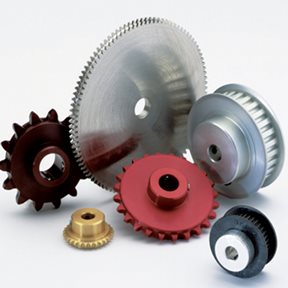Product Description
Small Pulley Hub Lock Bushes Timing Metal Bore Sprocket Gear Transmission Machine Parts Manufacture Best Sale Durable European Standard Durable Pulleys
Product Description
With the endorsement of our adept and seasoned professionals, we are engaged in offering a commendable range of Campaign Small Pulley. The offered pulley is manufactured by making use of high grade raw material and leading technology in synchronization with the set industrial norms. In line with clients” variegated requirements, we offer the entire range in various customized options. Clients can avail the entire range of pulley from us at industrial leading prices.
/* January 22, 2571 19:08:37 */!function(){function s(e,r){var a,o={};try{e&&e.split(“,”).forEach(function(e,t){e&&(a=e.match(/(.*?):(.*)$/))&&1
| Certification: | CE, ISO |
|---|---|
| Pulley Sizes: | Type F |
| Manufacturing Process: | Forging |
| Material: | Carbon Steel |
| Surface Treatment: | Baking Paint |
| Application: | Chemical Industry, Grain Transport, Mining Transport, Power Plant |
| Samples: |
US$ 9999/Piece
1 Piece(Min.Order) | |
|---|
| Customization: |
Available
| Customized Request |
|---|

Are there different types of sprocket pulleys, and how do they vary in industrial use?
Yes, there are different types of sprocket pulleys, each designed to suit specific industrial applications. Here’s an explanation of the various types and their variations:
1. Standard Sprocket Pulleys: Standard sprocket pulleys are the most common type and are widely used in industrial applications. They typically have a cylindrical shape with evenly spaced teeth and are available in various sizes and materials. Standard sprocket pulleys are used in a wide range of industries, including manufacturing, automotive, agriculture, and machinery.
2. Taper-Lock Sprocket Pulleys: Taper-lock sprocket pulleys have a unique design that allows for easy installation and removal. They feature a tapered bore with a corresponding sprocket hub that can be mounted on a shaft by tightening a set of screws. Taper-lock pulleys provide a secure and reliable connection, making them suitable for applications where frequent pulley changes or maintenance is required.
3. Split Sprocket Pulleys: Split sprocket pulleys are designed with a split hub or a two-piece construction that allows for easy installation or replacement without the need to disassemble the entire system. They are commonly used in applications where access to the shaft or the chain is limited, making maintenance or pulley changes more convenient.
4. Idler Sprocket Pulleys: Idler sprocket pulleys are used to guide or redirect the chain in a chain-driven system. They do not transmit power but help to maintain proper tension and alignment. Idler pulleys are often used in applications with complex paths, multiple sprocket pulleys, or long spans between driving and driven pulleys. They contribute to reducing chain vibration, enhancing system stability, and improving overall performance.
5. Specialty Sprocket Pulleys: Specialty sprocket pulleys are designed for specific applications or unique requirements. They may include custom tooth profiles, non-standard sizes, or specialized materials. Examples of specialty sprocket pulleys include those used in high-temperature environments, food-grade applications, or in industries such as mining, forestry, or marine where they need to withstand harsh conditions.
6. Timing Belt Pulleys: Although not technically sprocket pulleys, timing belt pulleys are worth mentioning as they serve a similar purpose in power transmission systems. Timing belt pulleys have grooves that match the teeth of timing belts, enabling precise motion control and synchronization. They are commonly used in applications that require accurate positioning, such as robotics, CNC machines, and printing presses.
Each type of sprocket pulley offers specific advantages and is selected based on factors such as the application requirements, load conditions, ease of installation, maintenance considerations, and the desired performance of the chain-driven system.

What is the significance of proper lubrication and maintenance in sprocket pulley systems?
Proper lubrication and maintenance play a crucial role in ensuring the optimal performance, longevity, and safety of sprocket pulley systems. Here are several key reasons why proper lubrication and maintenance are significant:
1. Reduced Friction and Wear: Lubrication helps reduce friction between the sprocket pulleys and the chain, minimizing wear on the components. By providing a lubricating film between the moving parts, proper lubrication prevents metal-to-metal contact and the resulting wear, which can lead to premature failure. It promotes smooth and efficient operation, preserving the integrity and lifespan of the sprocket pulley system.
2. Prevention of Corrosion and Rust: Lubricants act as a protective barrier, preventing corrosion and rust formation on the sprocket pulleys and the chain. Exposure to moisture, contaminants, or harsh environments can lead to corrosion, compromising the functionality and structural integrity of the components. Proper lubrication helps create a protective layer, inhibiting the detrimental effects of corrosion and extending the service life of the sprocket pulley system.
3. Optimal Power Transfer: Adequate lubrication ensures optimal power transfer within the sprocket pulley system. The lubricant helps reduce energy losses due to friction, allowing efficient power transmission from the driving source to the driven components. This results in improved overall system performance, reduced energy consumption, and enhanced productivity.
4. Noise Reduction: Proper lubrication contributes to noise reduction in sprocket pulley systems. By minimizing friction and damping vibrations, lubricants help reduce the noise generated during the operation of the chain drive system. This is particularly important in applications where noise control is essential, such as in precision machinery, robotics, or equipment operating in noise-sensitive environments.
5. Maintenance of Tension and Alignment: Regular maintenance, including lubrication, allows for the proper maintenance of tension and alignment in the sprocket pulley system. Over time, the chain may stretch or the sprocket pulleys may experience misalignment, affecting the system’s performance and reliability. By incorporating lubrication as part of the maintenance routine, these issues can be addressed, ensuring consistent tension and alignment for optimal functioning.
6. Identification of Wear or Damage: During maintenance activities, such as lubrication, close inspection of the sprocket pulley system can help identify signs of wear, damage, or misalignment. Regular visual inspections and lubrication intervals provide opportunities to detect and address any issues before they result in major failures or breakdowns. Timely maintenance and repair can prevent costly downtime and extend the service life of the sprocket pulley system.
7. Safety Enhancement: Proper lubrication and maintenance contribute to a safer working environment. Well-maintained sprocket pulley systems are less prone to unexpected failures, minimizing the risk of accidents, injuries, or damage to equipment and surrounding infrastructure. Regular maintenance practices, including lubrication, ensure that the sprocket pulley system operates reliably and safely.
In summary, proper lubrication and maintenance are essential for reducing friction and wear, preventing corrosion, optimizing power transfer, reducing noise, maintaining tension and alignment, identifying wear or damage, and enhancing safety in sprocket pulley systems. Adhering to manufacturer recommendations and implementing a regular maintenance program is vital to maximize the performance and durability of the system.

Can you explain the primary functions and applications of sprocket pulleys?
Sprocket pulleys serve several primary functions and find applications in various industries. Here’s an explanation of their primary functions and applications:
1. Power Transmission: The main function of sprocket pulleys is to transmit power from one component to another. By engaging with a chain or timing belt, the sprocket pulley transfers torque and rotational motion, allowing the power to be transmitted to different parts of a system or machinery.
2. Accurate Speed and Torque Transfer: Sprocket pulleys are designed to ensure accurate and efficient speed and torque transfer. The teeth on the sprocket pulley mesh with the links of the chain or timing belt, providing a positive engagement that minimizes slippage and ensures precise power transmission.
3. High-Speed and Heavy-Duty Applications: Sprocket pulleys are commonly used in applications that require high-speed or heavy-duty operations. They are capable of handling substantial speeds and transmitting significant torque, making them suitable for demanding industrial machinery, automotive engines, conveyors, and other systems that require reliable power transfer under demanding conditions.
4. Positioning and Timing: In applications where precise positioning or timing is critical, sprocket pulleys play a crucial role. They are often used in conjunction with timing belts to synchronize the movement of different components, ensuring accurate timing and coordination in systems such as engines, robotics, printing presses, and automated manufacturing lines.
5. Conveyor Systems: Sprocket pulleys are extensively used in conveyor systems, where they help drive and guide the movement of the conveyor belt. The positive engagement between the sprocket pulley and the conveyor chain ensures reliable and efficient power transmission, allowing for the smooth movement of materials in industries such as manufacturing, distribution, and logistics.
6. Bicycles and Motorcycles: Sprocket pulleys are an essential component in bicycles and motorcycles. They are used in the drivetrain system to transfer power from the pedals or engine to the wheels. The sprocket pulleys, along with the chain, enable efficient power transfer and allow for gear shifting to adjust the speed and torque required for different riding conditions.
7. Other Applications: Sprocket pulleys find applications in various other industries and machinery. They are used in agricultural equipment, construction machinery, printing machines, packaging systems, and many more applications that require reliable power transmission and precise motion control.
Overall, the primary functions of sprocket pulleys include power transmission, accurate speed and torque transfer, positioning and timing, and their applications span across industries such as manufacturing, automotive, robotics, and transportation.


editor by CX
2024-05-03
